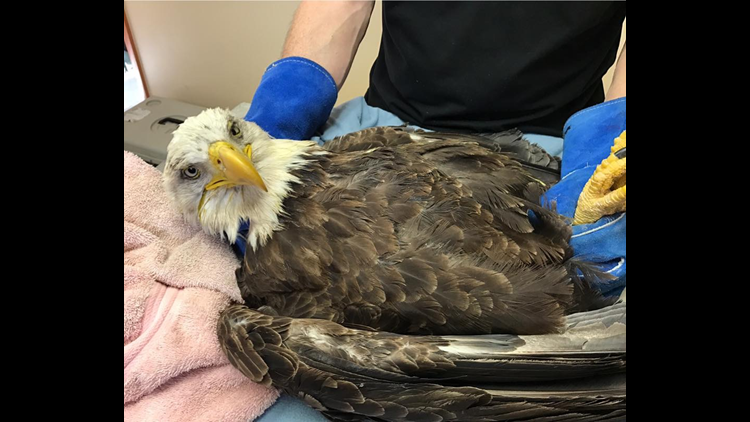An injured bald eagle, found lying on the side of the road in North Spokane, Wash., is recovering from what veterinarians believe to be illness caused by toxins it ingested.

A good Samaritan, who spotted the sick bird on the side of the road, picked him up and brought him to Mount Spokane Veterinary Hospital, where vets were unsure of what was ailing the eagle, an American symbol of strength too weak to stand.
“He was pretty much like a dead bird,” said Dr. Luther McConnell, the vet on duty Friday night. “And there were a few times we thought he was dead.”

Dr. McConnell said although the eagle has made progress and is now upright, it is not yet out of the woods.
“It’s been kind of a slow process,” Dr. McConnell said. “He is moved to a large enclosure now where he is walking around and he is perching – but he is still very, very ill.”

The vets at the animal hospital say it is still unclear what is wrong with the eagle.
“The report was that someone saw him get hit by a car, so that was the initial thought. But whether he was sick before he got hit by a car, or whether he did get hit, we don’t know for sure,” Dr. McConnell said. “We’re treating him for all of the above. He has no fractures and he’s physically ill, so we’re treating him for the shock, fluid loss and infection.”
The eagle was kept in the animal hospital over the weekend and, according to the current vet on duty, Dr. Randy Scott, the bird’s recovery may give insight into what may have caused his illness.

“He’s on antibiotics and he is regurgitating some real foul smelling material,” he said. According to Dr. Scott, that could mean the eagle ate something toxic.
“They have been known, these eagles, to ingest things like cow placentas, and if there’s some bacteria in there that’s producing an endotoxin, they’ll get pretty sick,” Dr. Scott said.
While the eagle has made progress at the Veterinary Hospital, Dr. McConnell said the plan is to move him to the Washington State University School of Medicine, where doctors can conduct more testing and provide around-the-clock surveillance.

